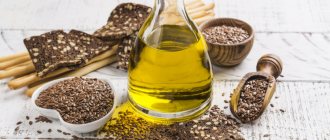05/24/201805/24/2018 Olga Migunova
Dysbacteriosis in gastroenterology does not belong to the category of separate diseases. Such a violation is considered as a consequence of certain pathologies of the body as a whole. There are a sufficient number of modern solutions in medicine to restore the intestinal microflora, but the main task is a purely individual approach to each clinical case.
Any quantitative and qualitative changes in the composition of the intestinal microflora in a chain reaction immediately cause more and more new problems. In the absence of competent and timely treatment, such disorders go beyond problems affecting only the digestive tract and provoke malfunctions in many other vital organs.
What is meant by intestinal microflora?
Our intestines are populated by many living microorganisms. In the process of their active interaction with each other, they ensure full and uninterrupted functioning of the entire digestive tract. Together they all form the intestinal microflora. It’s hard to imagine, but normally their number is almost 50 trillion, and their total weight sometimes reaches 3 kg.
These bacteria are so numerous that the number of officially recognized species alone already exceeds 500 species. At the same time, a lot of microorganisms that have not yet been fully studied safely exist in the intestines.
Why does the gut need bacterial diversity?
The human intestine contains trillions of bacteria, which can be divided into good, neutral and bad (pathogenic). Normally, a balance is maintained between them - the good ones maintain order in the intestines, preventing pathogenic ones from multiplying and causing chaos.
The intestinal microbiota is a smart ecosystem that is responsible for the breakdown of food, the synthesis of beneficial acids and vitamins, the protection and strengthening of the immune system and intestinal walls. When one type of good bacteria dies, a group of others comes to the rescue and takes over their functions. But this only happens if the microbiota is sufficiently diverse.
From the very first days of our lives, intestinal bacteria learn to interact with the immune system so that it recognizes and attacks only foreign microorganisms. But when the microbiota is not balanced, there is a risk that communication with the immune system will be disrupted, and it will direct its destructive effect against the host body.
Microbiota. What kind of organ is this and why do we need it?
When several types of good bacteria die, immunity decreases. This allows pathogens to multiply, increasing the risk of infection and inflammation.
Diagnosis: dysbacteriosis
When a person is healthy, as a percentage, only 1% of bacteria out of 100 in the intestines are opportunistic. This is a yeast-like fungus, clostridia, all kinds of staphylococci, etc. The remaining 99% consists of lacto- and bifidobacteria, enterococci, aerobes and E. coli.
As for the latter, its benefit sharply turns into harm as soon as this type of bacteria penetrates other organs. In this case, E. coli causes a number of serious infectious diseases of the digestive tract and genitourinary system.
If this quantitative ratio changes and pathogenic bacteria begin to multiply, significantly exceeding the permissible 1%, and beneficial microorganisms sharply decrease in number, such an imbalance is called dysbiosis in medicine.
How antibiotics affect the body
Despite the effectiveness of antibiotics in fighting bacterial infections, taking these drugs is associated with a number of adverse reactions.
Allergic reactions . In the United States, 140,000 people are admitted to the emergency room each year with allergic reactions to antibiotics. Such reactions include:
- Rash;
- Itching;
- Diarrhea, constipation, bloating;
- Swelling of the face and respiratory tract;
- Breathing problems.
Some studies show that antibiotic use in children's first year of life increases the risk of asthma, allergic reactions and autoimmune diseases. Scientists also believe that these drugs play a role in the development of obesity.
Antibiotic resistance. According to the World Health Organization (WHO), the number of deaths from infectious diseases is expected to rise sharply in the coming decades. This is due to the resistance that bacteria develop to the antibiotics used.
According to statistics, global antibiotic use increased by 39% between 2000 and 2015.
Increased risk of infection with the pathogenic bacterium Clostridium difficile C. difficile causes enterocolitis, the symptoms of which can range from mild diarrhea to sepsis. When you take antibiotics, the bacteria that protect your intestines from infection are killed. This is when it is easier for C. difficile to enter the body and trigger inflammation. The main sources of this pathogen are contaminated surfaces, especially in healthcare facilities.
Imbalance of intestinal bacteria Widespread use of antibiotics does not only lead to bacterial resistance to drugs. It also causes an imbalance in the intestinal microflora, which in the long term can lead to metabolic disorders and disruptions in the immune system.
The most common types of microorganisms that inhabit the gastrointestinal tract
The widespread use of antibiotics does not only lead to bacterial resistance to drugs. It also causes an imbalance in the intestinal microflora, which in the long term can lead to metabolic disorders and disruptions in the immune system.
If you start taking a course of antibiotics, be sure to finish it completely, even if you start to feel better. Premature termination of the course contributes to the development of bacterial resistance to the antibiotic and increases the risk of re-infection.
General clinical signs of intestinal dysbiosis
Dysbacteriosis can be confirmed or refuted exclusively with the help of laboratory diagnostics. But even in this case, there are no single strict indicators. For absolutely every person, the norm refers to purely individual quantitative and qualitative parameters in the ratio of bacteria.
The main features are:
- increased fatigue and poor appetite;
- excessive gas formation;
- nausea and persistent unpleasant taste in the mouth;
- diarrhea, constipation or their alternation;
- abdominal pain;
- excessive sweating;
- bad breath;
- belching and heartburn;
- itching and burning in the anus;
- all signs of vitamin deficiency: brittle nails and hair, chapped lips and dry skin;
- food allergies and related skin rashes;
- headaches and elevated body temperature.
Before making any categorical conclusions, do not forget to take into account that about 90% of the total number of patients in whom dysbiosis has been progressing for a long time, except for constipation or diarrhea, do not feel any discomfort at all. This fact is another good reason to conduct a laboratory analysis of stool for dysbacteriosis and not engage in useless self-medication.
The best monocomponent probiotics
Monocomponent probiotics include the simplest products, which contain only one type of living microorganisms. This may be normal E. coli, lactic acid bacteria, or bifidobacteria. These probiotics were the first to appear on the market, which is why they are called “first generation” probiotics. Despite the fact that many other combined and complex drugs have appeared, these means for improving the microflora of the gastrointestinal tract are still not outdated. The ranking opens with the popular folk probiotic Bifidumbacterin.
Bifidumbacterin
Rating: 4.9
This probiotic contains only live bifidobacteria that have been vacuum dried or freeze-dried. Most often you can see bifidumbacterin in powder, which has a beige or grayish color. But it is also available in capsules, tablets, vaginal and rectal suppositories, and as a liquid concentrate. Like many other probiotics, bifidobacteria normalize intestinal activity, allow the synthesis of vitamins to re-establish, and help in the complex therapy of many chronic diseases.
Bifidumbacterin is indicated for various intestinal disorders, after the prescription of antibiotics, after dysentery and salmonellosis. You can use a probiotic after various extraintestinal infections, for example, during the recovery period, treatment of pneumonia. Bifidumbacterin is indicated for children, including infants, women with inflammatory diseases of the female genital organs after antibiotic therapy and for many other conditions.
For small children under the age of 6 months, only powder can be used, and other forms can be prescribed only from the age of three. Babies can even add the powder to breast milk. Usually the course of treatment is 2 weeks, and only a doctor can extend it. Probiotic capsules are taken orally half an hour before meals. The dosage is prescribed according to the instructions. The most important thing is to prevent the drug from spoiling, do not dilute the powder in hot water. For 10 capsules you can pay only 100 rubles, for 20 tablets - 200 rubles, for 10 suppositories - 70 rubles, but 10 ml of liquid concentrate in a bottle will cost 600 rubles. Bifidumbacterin is produced in tablets and capsules by the domestic company Ecopolis, suppositories by Lanafarm, and liquid concentrate by Bio Long Life.
Advantages and disadvantages
Bifidumbacterin has practically no contraindications, and the only disadvantages include individual intolerance, which Bifidumbacterin has a shelf life of one year; it must be stored in the refrigerator, like other probiotics.
Lactobacterin
Rating: 4.8
Lactobacterin also belongs to the first generation probiotics, but, unlike bifidobacteria, its capsules contain live lactobacilli, or lactic acid bacilli, which synthesize lactic acid. It is known that an excessive alkaline environment promotes the development of pathogenic bacteria in the intestines, but a small amount of lactic acid promotes the growth and development of normal microflora. Lactobacterin is primarily indicated when pathogenic staphylococci, Escherichia coli, and Proteus are detected in stool analysis when cultured for dysbacteriosis.
The pharmaceutical industry produces dry lactobacterin in the form of bottles with probiotic powder. It is recommended to take Lactobacterin during recovery from acute intestinal infections and prolonged diarrhea, which practically eliminate all normal microflora, and for various common diseases that depress our “helpers”. These are the consequences of antibacterial therapy, chemotherapy and radiation therapy. Lactobacterin is indicated for the treatment of children with various chronic and acute diseases, with skin pathologies; this probiotic is indicated for patients with ulcerative colitis. It is important that it is lactobacilli, or Dederlein bacilli, that make up the main “population” of the female genital tract, and for various vaginitis, for bacterial vaginosis, it is necessary, after sanitation, to use locally diluted lactobacterin to restore the vaginal microflora in women.
The usual regimen for using a probiotic involves diluting the drug in one teaspoon of water. 1 bottle of Lactobacterin contains 5 doses, and the preparation method (depending on age) is described in detail in the instructions. For example, a baby under 6 months of age can be given three doses 2 times a day, for example when treating an intestinal infection. It can be used for no longer than 10 days without a doctor’s prescription. Lactobacterin is produced by the domestic company Microgen, and you can purchase 10 bottles for 150 rubles.
Advantages and disadvantages
The obvious advantage of Lactobacterin is its use not only in the treatment of diseases of the gastrointestinal tract, but also to restore the vaginal biocenosis in gynecological pathologies, which is unusual for most probiotics. Lactobacterin is also a probiotic that can be used in babies from the first day of life, and at the same time it is very affordable. Perhaps the only drawback of Lactobacterin is its “narrow” composition of lactic acid bacteria, but it was included in the rating for its versatility and use in gynecological practice.
Colibacterin
Rating: 4.7
The last widely known first-generation probiotic can be considered colibacterin. Escherichia coli is a normal Escherichia coli that does not have pathogenic properties, and in this preparation, in addition to the culture of the microorganism, a sugar-gelatin medium is added, all of which is dried in a vacuum and packaged in ampoules of 3 doses each. Unlike the other probiotics described above, there is only an oral form, and each ampoule contains 30 billion living cells - that is, several times more than there are people on our planet.
There is also a difference in indications. This probiotic is used for diseases that disrupt the microflora of the large intestine. This includes dysentery, both chronic and prolonged, enterocolitis and colitis, as well as recovery (convalescence) after various intestinal infections. This probiotic is not used in gynecological practice, since E. coli should not be found in the genital tract, and use is not indicated for intestinal ulcers. Usually the contents of one ampoule are diluted with water, and after 5 minutes they are used orally half an hour before meals. Thus, an adult requires an average of 10 doses per day, or three ampoules, which can be divided into several doses depending on food intake. You can take Colibacterin from the age of six months. Dry colibacterin is produced by the domestic company Microgen, and you can purchase one package of 10 ampoules at a price of 230 rubles.
Advantages and disadvantages
Of course, Colibacterin is used for more limited indications, but this cannot be considered a disadvantage of the probiotic. In some cases, there may be adverse reactions to the administration of the drug, which may include nausea and slight abdominal discomfort, but this passes quickly and does not require any withdrawal. There is, of course, an individual reaction to Colibacterin, which can manifest itself as a skin rash and diarrhea. In this case, the probiotic should be discontinued. Colibacterin should be stored at a temperature not exceeding 10 degrees.
Modern and effective methods of treatment
The effectiveness of treating an imbalance in the microflora always depends, first of all, on the true causes of its occurrence, as well as on the severity and stage of the disease. This will be determined by a professional gastroenterologist, and the results of the examination will significantly affect the choice of treatment method and the correct selection of drugs. The process itself is quite lengthy and in advanced cases can take several months.
Drug treatment
Treatment with medications aims to restore the intestinal microflora, correct the immune system and completely eliminate the symptoms of the disorder. Each product contains different groups of bacteria and, accordingly, has different effects. Therefore, in most cases, therapy is complex, and the most successful combination will be such drug groups.
- Bacteriophages. A virus that penetrates a cell and dissolves it.
- Antibiotics. They are selected taking into account the degree of sensitivity of specific microorganisms to this drug.
- Intestinal antiseptics (Nifuroxazide, Ciprofloxacin, Furazolidone, etc.).
- Immunomodulators (Echinacea, Dibazol).
- Multivitamins (Multitabs, Decamevit, etc.).
- Probiotics and prebiotics.
- Herbal antiseptics (Chlorophyllipt).
When choosing a drug, special attention should be paid to its release form. In some cases, it will be of fundamental importance to take it in the form of a tablet, powder or capsule.
Treatment with probiotics and prebiotics
Probiotics and prebiotics are two radically different categories of drugs that are significantly different in nature, but at the same time perform the same task: restoring intestinal functions and creating all favorable conditions for normalizing microflora.
The probiotic contains live lacto- and bifidobacteria, various combinations of yeast and lactic acid bacteria. In the treatment of dysbiosis, the main benefits of this category are as follows:
- strengthens the intestinal mucosa, which is the main barrier to pathogenic bacteria;
- stops the growth of pathogenic microorganisms and prevents their attachment to the intestinal walls;
- stimulates the immune system, ensures the resistance of antibodies to viruses;
- produces vitamin B for complete metabolism;
- destroys toxins released by pathogenic microorganisms.
In certain cases, probiotics may be contraindicated in elderly patients, and may also inhibit the effect of certain medications. Despite the apparent harmlessness of this group of drugs, do not neglect the consultation of your doctor.
Prebiotics are organic carbohydrates that directly affect the accelerated growth and development of beneficial intestinal bacteria. The category includes dietary fiber, lactose, inulin, lactulose and fructosaccharides.
The therapeutic effect is as follows:
- increase acidity in the intestinal environment, thereby counteracting the development of harmful bacteria;
- neutralize the harmful effects of antibiotics;
- increase the amount of feces, stimulating intestinal function;
- significantly reduce the concentration of cortisol in the blood;
- eliminate bloating and gas formation;
- reduce appetite;
- at the initial stages they block the development of malignant tumors in the large intestine;
- remove toxins, heavy metal salts and other toxic substances;
- promote accelerated release of mucus from the walls of the stomach;
- maintain acid-base balance within normal limits.
The most popular prebiotics include Lactusan, Duphalac, Lizalak, Pikovit syrup, DiRezen, Proslabin, Hilak Forte, Laktofiltrum and Goodluck.
Treatment with symbiotics
During the treatment process, symbiotics are prescribed when it is necessary to obtain maximum effectiveness in the shortest possible time. These are drugs that, in a certain combination, combine probiotics with prebiotics and have a powerful beneficial effect on the microflora.
The therapeutic effect is achieved in this way:
- produce folic acid, vitamin K, pyridoxine and niacin;
- normalize cholesterol levels;
- maximally activate the immune system;
- provide lasting protection against carcinogens, toxins, radiation and antibiotics;
- normalize intestinal motility;
- destroy pathogenic bacteria;
- normalize the balance of intestinal microflora.
Despite similar effects with probiotics, the positive results from treatment last much longer.
The most popular symbiotics in pharmacology are Bacteriobalance, Symbiolact, Bifidin, Linex, Polybacterin, Trilact, Bifiform, etc.
The role of enzymes in dysbiosis
The help of enzymes during the treatment process becomes necessary when complications arise in digestion. Significant symptoms include flatulence, belching, and severe heartburn. Enzymes of both animal and plant origin are used. The former are much more effective due to the fact that their composition is identical to the enzymes that the human body produces.
But when treating with enzymes, it is especially important to focus on the original cause of dysbiosis. The selected drug should be the best option for its effect on the affected organ, which has caused an imbalance in the intestinal microflora. A positive result is expressed in the normalization of the stomach, pancreas and restoration of the intestines.
Most often prescribed are Pancreatin, Festal, Creon, Mezim.
Nutritional Features
Without following a certain diet, it is impossible to talk about a successful outcome of treatment. It’s best to forget about overeating at night and automatically swallowing food on the go. Anything fatty, spicy, as well as alcohol are subject to exclusion.
The diet must be enriched as much as possible with live bifidobacteria and lactobacilli, plant fiber and proteins. Fractional meals at strictly established times become fundamentally important. It is strongly recommended to replace sugar with honey.
Eating the most healthy foods possible
- All kinds of boiled cereals in water.
- Dairy products.
- Freshly squeezed fruit juices and vegetable purees.
- Herbal teas, still mineral water.
- Low-fat fish and steamed meat.
- Fresh greens.
Products subject to complete exclusion
- Garlic, radish, onion.
- Hot herbs and spices.
- Homemade pickles.
- Confectionery and homemade baked goods.
- Mushrooms.
- Canned food and smoked meats.
- Whole milk and ice cream.
- Cooking fats and mayonnaise.
An individual diet is prescribed only on the basis of each clinical case, depending on the stage of the disease and the root cause of the pathology, followed by dysbiosis.
Folk remedies
The use of folk remedies should in no way replace traditional drug treatment and may only be appropriate as an additional therapy. Some recommendations are contradictory and suggest the use of foods prohibited by doctors and nutritionists. Therefore, without additional consultation with a specialist and, especially, as self-medication, you should not blindly follow these tips.
Let's take a closer look at the main recommended folk remedies.
- Propolis, honey and kombucha as antiseptics.
- Herbal infusions (mint, chamomile, lemon balm, raspberry and black currant leaves, strawberries, eucalyptus and senna leaves).
- A decoction of alder cones and serpentine root.
- A medicinal collection of chamomile flowers, bird cherry fruits, caraway seeds and blueberry leaves.
- A mixture of ground sunflower seeds, pumpkin seeds and walnut kernels.
- Garlic tincture with kefir or sour milk.
- Compotes of cranberries, raspberries, blueberries and lingonberries.
- Tinctures of chamomile, calendula and yarrow.
- Pomegranate peels, oak bark decoction, and bird cherry berries help as an astringent for frequent diarrhea.
These are the most common methods, but there are a huge number of other folk remedies that are often used to combat dysbiosis. Some patients often question the effectiveness of some of them, while others desperately praise these same recipes. Therefore, it is so important to place emphasis on well-known and proven effective medications.
Purgation
Symbiotics and prebiotics cause the death of harmful microorganisms, as a result of which the intestines are filled with toxic decay products of these bacteria.
Their accumulation is unacceptable and bowel cleansing procedures become not only useful, but also necessary. Most often, enemas or various herbal infusions are used for this, but they also do an excellent job of removing toxic toxins:
- Activated carbon;
- magnesium sulfate;
- food enriched with plant fiber;
- baking soda;
- yoghurts or kefir;
- Castor oil;
- still mineral water.
Rating of drugs for the intestines
In addition to the manufacturer, the decisive criterion when choosing a medicine will be the doctor’s prescription. For preventive purposes, probiotics and prebiotics for the intestines can be purchased at the pharmacy without a prescription. The rating includes the best drugs for the intestines, which were selected according to the following characteristics:
- Release form;
- Contraindications;
- Compound;
- Purpose;
- Side effects;
- Efficiency;
- Assimilation;
- Age of application;
- Safety.
For greater coverage of characteristics, patient reviews, experience and personal observations of health workers were also taken into account. We did not ignore the availability of freely available drugs, the ratio of quality and price.
The best remedies for hemorrhoids
Prevention of intestinal microflora disorders
As preventive measures to prevent dysbiosis, a whole complex is meant, which requires adherence to a balanced diet, taking certain medications, and even a radical change in the usual lifestyle.
The most accessible and easy to implement ones are as follows:
- mandatory breaks during sedentary work;
- walking for at least 30 minutes a day;
- systematic hardening procedures;
- if there is no exacerbation of the intestines, daily consumption of berries, fruits and fresh vegetables is advisable;
- the usual menu should include vegetable fats, fermented milk products, meat and fish only in boiled form;
- drug prevention with the use of probiotics, prebiotics and symbiotics;
- Avoid psychological stress and overexertion in every possible way.
Possible Adverse Effects
Prolonged neglect of the problem and lack of proper treatment can lead to a number of harmful consequences for the entire body. There comes a time when damaged microflora completely blocks the absorption of vitamins and nutrients from incoming food.
As a rule, in most such advanced cases this leads to such violations.
- Eczema.
- Persistent severe allergic reactions.
- Bronchial asthma.
- Systematic painful constipation.
- The development of sclerosis progresses.
- Signs of arthritis appear.
- In adult patients, there are prerequisites for benign and malignant tumors.
- Seborrhea, alopecia and acne almost always occur.
- Anemia and dyspepsia.
- Development of a rickets-like condition due to extremely low absorption of vitamin D, iron and calcium.
- Intestinal obstruction and ulcerative colitis.
- Diabetes.
Accurate diagnosis and measures taken in the early stages can only predict a successful outcome in treatment. Adequate therapy, a conscious attitude and a healthy lifestyle of the patient to the existing problem almost always guarantee a 100% cure within the next 2 months.











